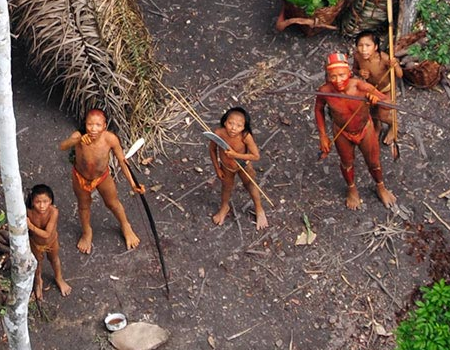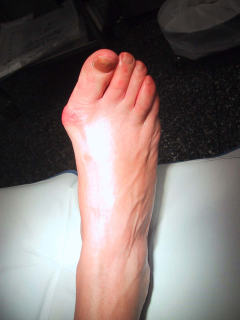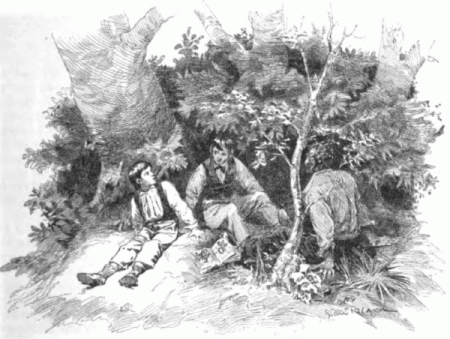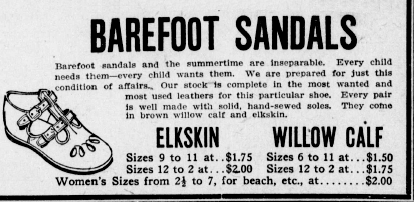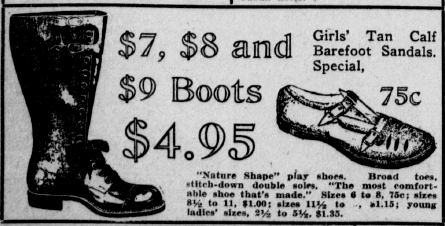BAREFOOTED SCHOOLBOY STARTS AN INFECTIOUS FAD
Boy Friends Do Not Go to Class Rooms That Way Yet; But They All Drop Their Shoes at Play-time Now — Problems of Attire for School Officials.
CITY SCHOOL SUPERINTENDENT SNYDER was not so rudely shocked as many may have supposed, when, at a recent meeting of the Jersey City Board of Education, he heard read Mr. Smith’s letter asking permission to send his ten-year-old boy, Victor, to school without either shoes or stockings. Mr. Snyder had gone to school barefooted and barelegged himself. But that was in a country district. The sight of the farmer’s boy trudging to the little white building on the knoll with his books under his arm and his sun-burned extremities unclad is not an unusual one. Even when parents with aristocratic notions in their rural surroundings refuse to countenance such a departure from the conventionalities, the more mischievous scions of their flocks were wont to keep their feet covered only until the parental eye was removed from them, and then they hid their gaiters under the bushes for a day of rollicking, barefoot freedom.
Even into the great city schools under Mr. Snyder’s supervision a barefooted urchin sometimes crawls. But conditions are different in the city. There it is not “the thing,” of course. But it happens once in a while. Superintendent Snyder has known of such cases. But the absence of shoes in city schools is always set down to poverty. Little Barefoot becomes an object of commiseration and sympathy the moment he puts in an appearance, and there is a mystic Masonry in the schools that finds coverings for the exposed feet and gets them to the child with a delicacy of method that robs the mercy of the sting and humiliation of a charity. It does not stop at shoes, either — this little touch of humanity. It goes to everything a child needs, but has not, to keep in countenance with classmates. No organization exists to extend these graceful helps to the needy, but it works just as effectually and much more unobtrusively.
Neither Mr. Smith nor his boy comes, however, within this category. Mr. Smith is a comfortably situated gentleman. It is easy to see, from his bearing toward his child, that he is also a considerate father. He has the means and the disposition to provide his son with all he thinks the boy should have. Up to three months ago, the family had lived in New York. For a few months before the close of the schools for vacation the boy had attended one in Manhattan.
“He wore shoes.” Mr. Smith explained, “because I suppose they would have turned him away if he hadn’t.”
At the beginning of the Summer the family moved to a neat detached cottage on West Side Avenue, Jersey City. It is an unusually comfortable little home in the Bergen section, well appointed, “neat as a pin,” with a wholesome family atmosphere all over it. The Smiths had scarcely settled before the father told the boy that he might toss his shoes into the attic and romp barefooted to his heart’s content. That was a liberty the boy was not likely to neglect long. Off went the shoes! It is so long since he last saw them that he forgets what they look like — whether they are low-quarters or high-quarters, or even quarters of any stature.
A barefooted boy, who was not also a ragamuffin — a barefooted boy with clean, bright face, and the picture of neatness from the crown of his head to the hems of his knee breeches — was a novelty in the locality. It was not long before all the nice little boys around him wanted to go barefooted, too. There were particularly impressed by the ease with which little Victor could guide the buckboard on which they all coasted the hillside with his bare feet. He could grasp the guiding axle with his toes as firmly as they could with their fingers. They could not do that with their shoes on — and so off went their shoes, too, till now there are so many bare feet around that the locality has come to be know as “Barefoot Hill.”
The boy became so rugged and healthy and hardy without his shoes that his father became quite captivated by the idea of keeping him shoeless. He recalled the incident of a beautiful Countess — a relative of Dom Pedro — whom he had once met, unslippered, at a like entertainment he attended. She had beautiful feet, of course, and of course, too, she had to set them off, as her sisters did their beautiful hands, with rings and jewels. So he became quite a convert to the barefoot idea, and regretted the approach of the school season, when he must put shoes on Victor’s feet to keep him in line with those he would meet in the classrooms — or keep him home.
Perhaps he might arrange it with the school authorities, he thought. He first bought a pair of shoes for the lad — many sizes too big — and held them for an emergency, and then sent his letter to the Board of Education to ask if it might be as he desired. The board members stood aghast at the unusual suggestion. It was one thing to close the eyes to the case of a little fellow whom poverty drove to school without shoes. It was quite another thing to commission one who could afford them to make so public an appearance without them. Perhaps the boy would be shamed by shoes all around him into wearing them himself. But then perhaps the idea would so “take” among the others that they would all want to discard their leathers, and Jersey City might become a city of barefooted schools. So it was quite a serious proposition, as the Jersey City educators saw it. But there was no rule against it, and they decided at the end to take the risk.
So Victor went to the school on Duncan Avenue, and has been there a week. The boys make less sport of him than even he expected. Indeed, they rather envy him. They only wish that they could take off their shoes, too! But the week has gone, and they all have their shoes on yet. Thus, the dire forebodings with which the board extended its consent to the innovation seem doomed to come to nothing!
The incident has, however, aroused a general discussion as to the regulations — written regulations — concerning the garb of school pupils. The School Superintendents have to deal with the problem in every conceivable phase, almost every hour of the day. The rules in the rule books are very general and unspecific. They merely exact neatness and cleanliness. An instance is recalled where a boy was once sent home from a Newark school for a change of clothing. He was not an agreeable companion to those around him, and it was discovered that his clothing had been sewn on him by his mother. He slept in them and worked in them and studied in them. At the beginning of the Summer the boys were disposed to throw off their jackets. Grimed undershirts were neither sweet nor pretty, and a stop had to be put to that. Superintendent Snyder intimates that he had been called upon recently to rule on even so delicate a question as whether the hair of a certain little Miss was not done up in such a way as to exclude her from the recitation room. But he declined to go into particulars.
A year or two ago a fierce public agitation was aroused in Jersey City by the act of a teacher who sent a little girl home for better clothing. It was resented everywhere as an insult to the class who could not do better. In Newark, Mr. Gilbert, when he was Superintendent there, attempted to lay down regulations as to commencement garbs. So that the rich might not outshine the poor he wanted plain gowns only. The interference raised such a has since thought it prudent to repeat it.
I like the part about how his friends then started playing barefoot. It is infectious.

